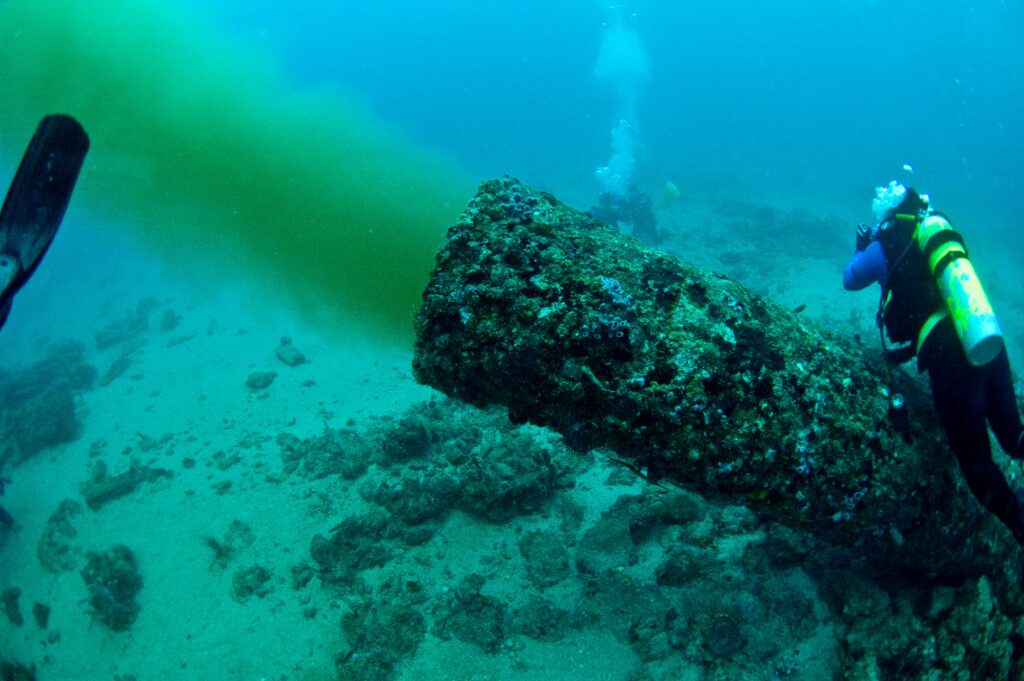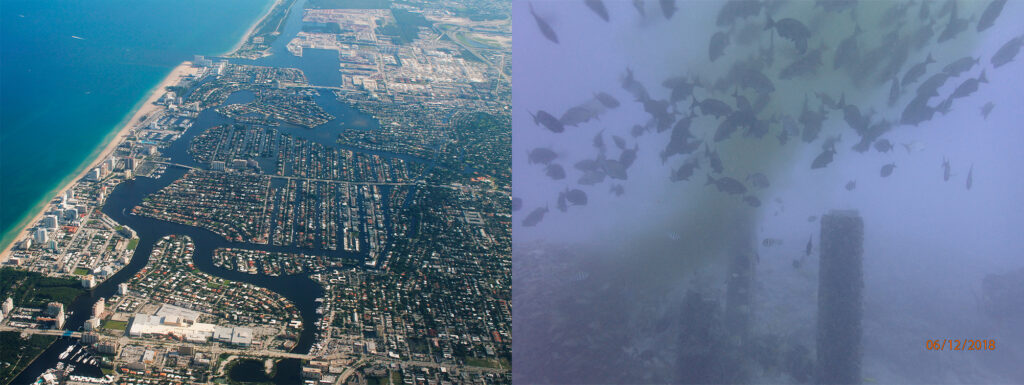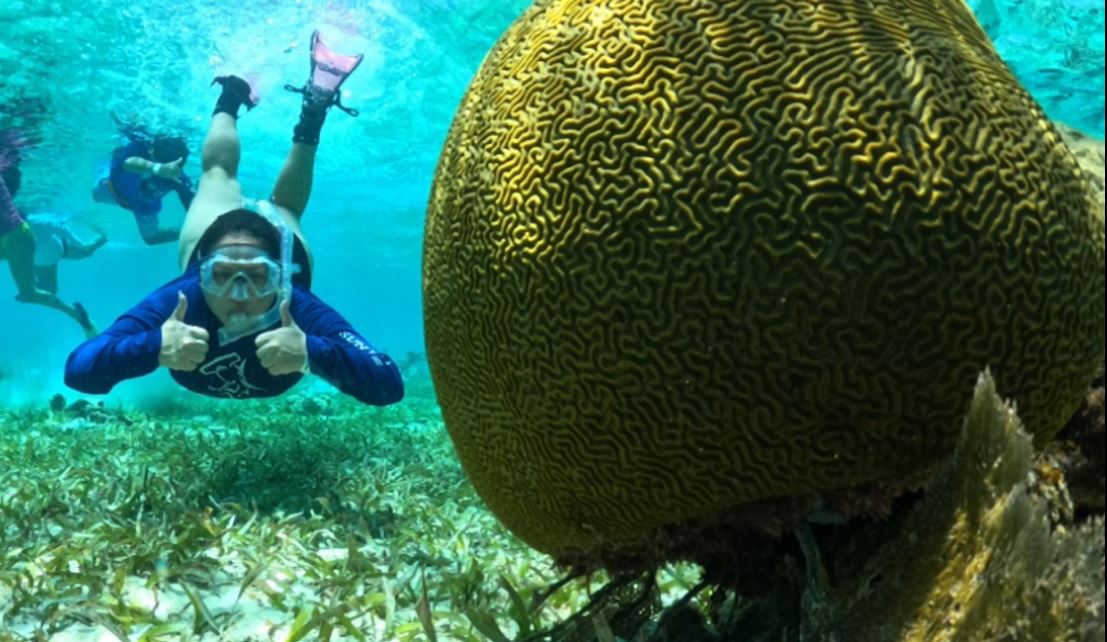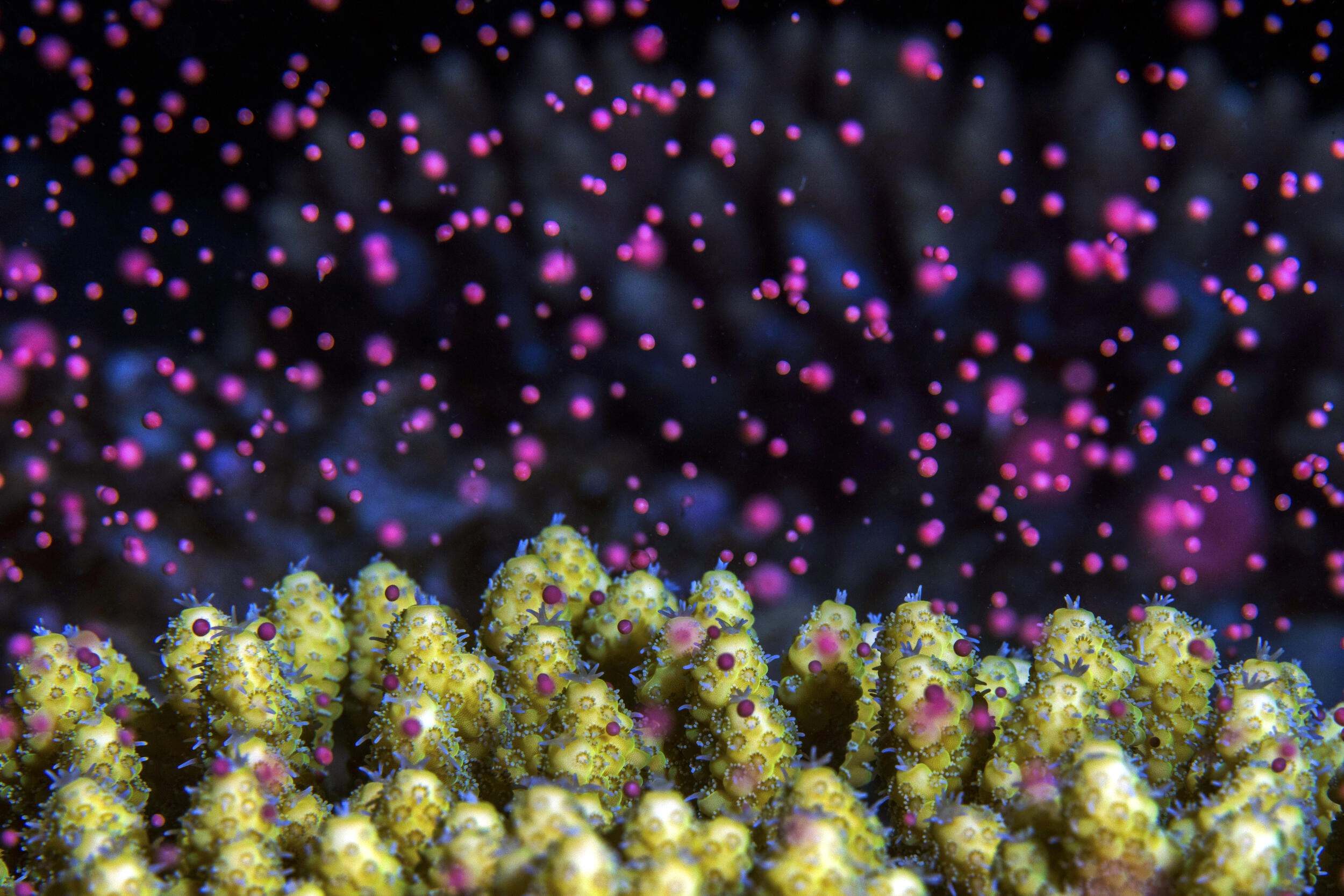Eliminating Ocean Outfalls for Coral Reef Protection
Location
Florida, USA
The Challenge
Ocean outfalls transport stormwater, combined sewer overflows, and other types of wastewater directly into the ocean a few miles offshore. While they can be a low-cost way to dispose of municipal wastewater, ocean outfalls can have high environmental and human health costs. In some cases, the wastewater discharged through ocean outfalls may have only gone through primary treatment or remains untreated. It can contain pollutants such as nitrogen and phosphorus, suspended solids and sediment, and pesticides. These pollutants can severely impact the marine environment and coral reefs. Excess nutrients in coastal waters can contribute to eutrophication that causes fish die-offs and loss of coral diversity. Pathogens and pharmaceuticals can lead to increased coral disease or reduced reproductive success for marine life.

Subsurface ocean outfall pipe. Photo © Steve Spring
Southeast Florida’s coastline is home to six ocean outfalls that are operated by seven permit holders. The state intends to eliminate the outfalls entirely by 2025. While Florida aims to treat its wastewater prior to entering outfalls, unregulated or new contaminants and increasing volumes of wastewater can still pollute coastal waters. Florida’s outfalls are threatening its coral reefs, which have seen increased rates of disease in recent years. For instance, stony coral tissue loss disease has been reported across more than 300 miles of coral reefs in Florida, from the southeastern coast all the way down to the Florida Keys and Dry Tortugas National Park.

Aerial view of Fort Lauderdale, Florida. Photo © Formulance/Flickr (left). Subsurface ocean outfall near Hollywood, Florida. Photo © Florida Department of Environmental Protection (right).
Florida also faces a significant and growing demand for water. Nearly 6.4 billion gallons of water are used in Florida each day, and it is estimated that demand will increase by an additional 1 billion gallons per day by 2040. Close to 70% of Florida is designated as a water resource caution area, meaning an area where groundwater withdrawals may impact the availability and quality of the water, and harm natural resources and the public’s well-being. Additionally, some aquifers in the state are experiencing saltwater intrusion, which decreases freshwater storage and reduces water quality in the aquifers.
Actions taken
Recognizing the potential to implement a multi-benefit solution to reduce wastewater pollution and respond to Florida’s growing demand for fresh water, the Florida Department of Environmental Protection (FDEP), the South Florida Water Management District, and impacted utilities collaborated to create and pass Chapter 2008-232, Laws of Florida, in 2008. This law created the Leah Schad Memorial Ocean Outfall Program, which prohibits constructing new wastewater ocean outfalls or expanding existing ones. The law also established:
- Advanced wastewater treatment and management requirements for any domestic wastewater being discharged through ocean outfalls to be met by December 2018.
- A timeline for eliminating the use of existing ocean outfalls. Discharging domestic wastewater through ocean outfalls will be prohibited after December 31, 2025.
- Requirements stipulating that dischargers must reuse a majority of wastewater discharged. Sixty percent of their “baseline flow” must be used for beneficial purposes by December 31, 2025. Baseline flow is defined in the 2008 law as the annual average flow of domestic wastewater discharging through the facility’s ocean outfall, as determined by FDEP monitoring data from 2003 through 2007.
- A funding mechanism and a dedicated account for pollution control within the Ecosystem Management and Restoration Trust Fund to assist in funding and implementing wastewater management actions that comply with the legislation.
To comply with the 60% reuse requirement, ocean outfall permit holders must:
- Construct additional water reuse and reuse distribution facilities
- Expand existing reuse facilities
- Contract with adjacent utilities to implement reuse if any permit holders cannot meet the reuse requirements on their own
- Develop a water reclamation facility, which includes two deep injection wells and a reuse system
These measures are part of a comprehensive approach to reduce the environmental impact of ocean outfalls by protecting marine environments and ecosystems and conserving water.
How successful has it been?
- As of January 2024, permit holders are still working to implement their planned actions to eliminate outfalls and meet their water reuse targets; however, they have already made progress in decreasing the amount of water released through ocean outfalls. Between 2008 and 2018, the amount of reclaimed water permit holders provided increased from 32 million gallons per day (mgd) to 43.5 mgd in total across all seven treatment plants, reducing the amount of water that would have otherwise been discharged into coastal waters.
- Of the seven permit holders, one is moving forward with plans to eliminate discharge through outfalls by implementing 100% reuse and only using the ocean outfall as a backup during emergencies or periods of reduced demand for reclaimed water. Five permit holders have constructed or are constructing deep injection wells as emergency backup to accept treated water during extreme events. One permit holder continues to review alternatives to outfall use, including constructing a deep injection well or sending its effluent to a nearby treatment plant for reuse.
- Permit holders are also helping the state conserve existing sources of potable water by providing reclaimed water as an alternative to potable water for golf course and agricultural irrigation, industrial and fire protection uses, toilet flushing, and watering public areas such as parks, highway medians, and residential areas. FDEP, who conducts monitoring across all seven facilities, calculated that the volume of potable water offset achieved across all seven permit holder facilities increased from 27.5 mgd in 2008 to 37.3 mgd in 2018. Potable water offset is defined by FDEP as “the amount of potable quality water saved through the use of reclaimed water expressed as a percentage of the total reclaimed water used.”
Lessons learned and recommendations
- Coordinating across multiple sectors and organizations is instrumental in passing ocean-protective, multi-benefit policies. Scientific, environmental, and political communities came together to develop and pass the 2008 legislation and determine mutually beneficial solutions that provide environmental and economic benefits. The involvement of many partners was critical in demonstrating the importance of Florida’s beaches and coral reefs—and ultimately the need for legislation to eliminate outfalls. This partnership resulted in strong, bipartisan political support for enacting the 2008 law and helped ensure its successful implementation.
- Reclaiming water provides multiple benefits. Over 300,000 new residents move to Florida each year, placing pressure on the state’s water resources. Reclaiming water is helping fill the public water supply gap while reducing strain on the state’s environment. The reclaimed water diverted from the outfalls is one example of water reuse throughout the state, and it has helped spur other successful efforts. For example, Plant City, Florida, has developed a unified water management approach that incorporates stormwater treatment, mitigation of localized flooding, rehabilitation of a natural habitat park, and increased water supply through potable reuse.
- Making the business case is key to implementing innovative solutions. Given Florida’s growing population and increased demand for clean water, emerging technologies can make water reuse an efficient and cost-effective solution. Developing methods to capture and treat water from ocean outfalls may become less expensive than developing new water supply sources. Municipalities that have permitted ocean outfalls should work to demonstrate the benefits of reusing water from outfalls in order to gain support for similar reuse efforts.
Funding Summary
Funding for these efforts is covered by tax dollars and generated by rate payers (e.g., water customers) to local municipal utilities.
Lead organizations
South Florida Water Management District
Partners
Florida Department of Environmental Protection (FDEP)
The Nature Conservancy Florida
Resources
Potable Reuse Frequently Asked Questions
WateReuse Association. Profiles in Reuse: Florida
Florida Recycled Water: The Facts
Wastewater: Turning Problem to Solution (2023)


